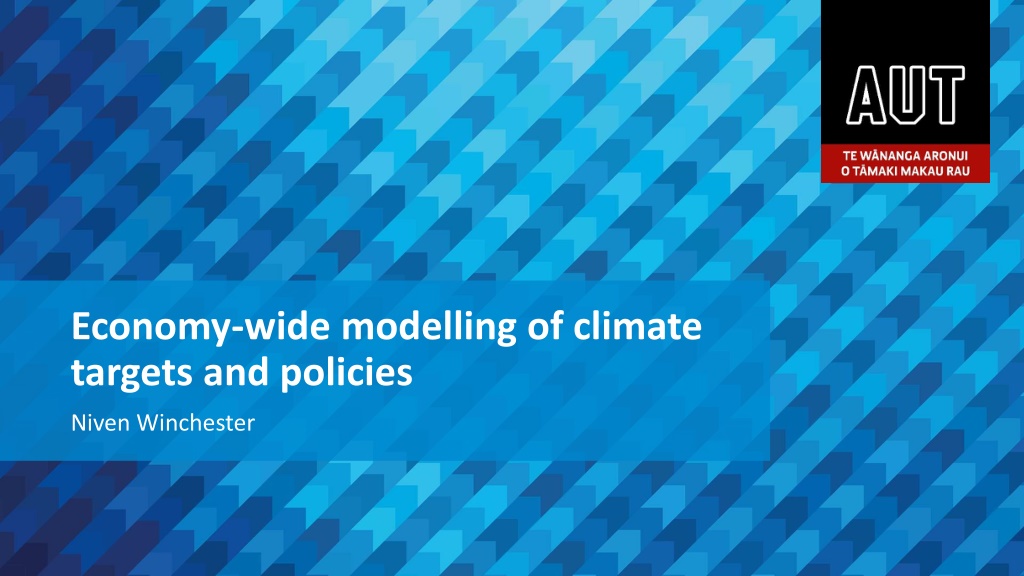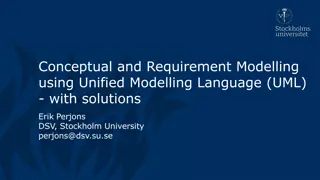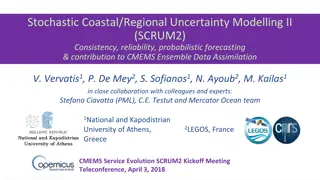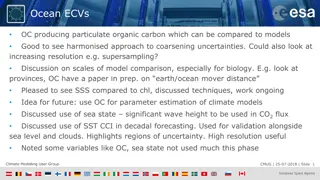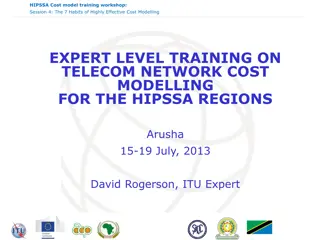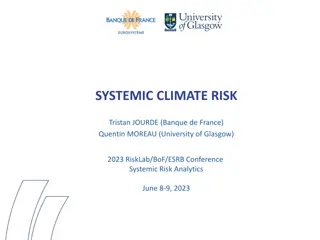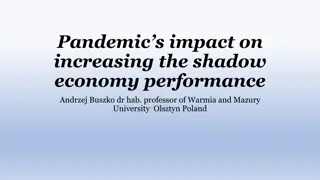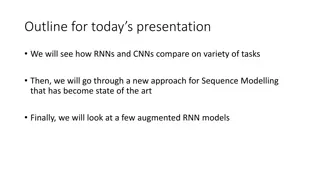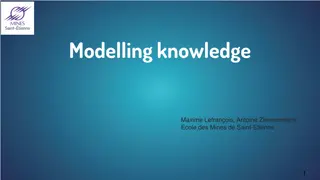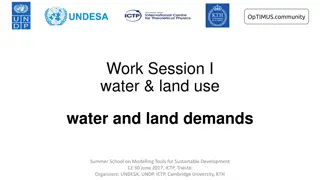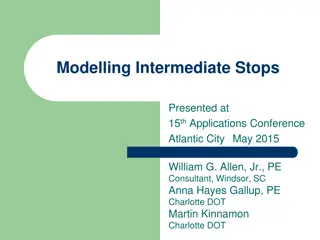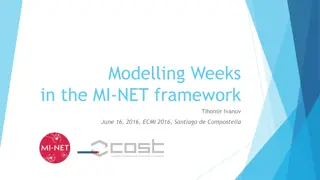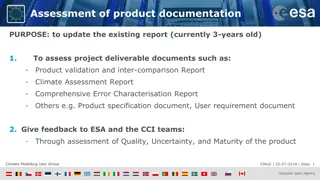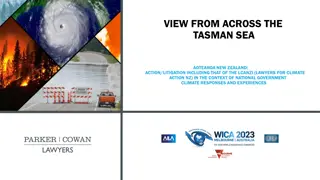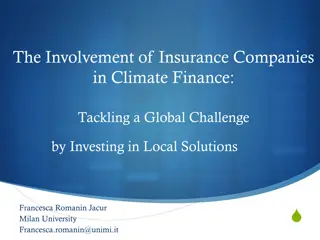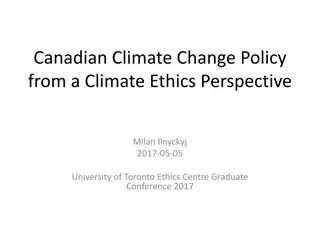Economy-wide Modelling of Climate Targets
Climate change is a pressing global issue, with significant implications for our future. The Economy-wide Policy Modelling in New Zealand focuses on developing effective climate policies through models like the Climate PoLicy ANalysis (CPLAN) and the Zero Carbon Act. These models incorporate economic, energy, and agricultural sectors, along with greenhouse gas emissions and new technologies. By setting long-term targets and establishing independent commissions, countries like New Zealand aim to mitigate climate change impacts and transition towards a sustainable future.
Download Presentation

Please find below an Image/Link to download the presentation.
The content on the website is provided AS IS for your information and personal use only. It may not be sold, licensed, or shared on other websites without obtaining consent from the author.If you encounter any issues during the download, it is possible that the publisher has removed the file from their server.
You are allowed to download the files provided on this website for personal or commercial use, subject to the condition that they are used lawfully. All files are the property of their respective owners.
The content on the website is provided AS IS for your information and personal use only. It may not be sold, licensed, or shared on other websites without obtaining consent from the author.
E N D
Presentation Transcript
Economy-wide modelling of climate targets and policies Niven Winchester
Climate change is a man-made disaster of global scale and our greatest threat in thousands of years Sir David Attenborough
Outline Economy-wide policy modelling New Zealand climate policy The Climate PoLicy ANalysis (CPLAN) model Distributional impacts Conclusions
Economy-wide Policy Modelling Computable general equilibrium (CGE) models for climate policy analysis include: Economic, energy and agricultural sectors and their interactions Greenhouse gas (GHG) emissions linked to activities New and emerging technologies No free lunch constraints Climate and other policies Built on national statistics, economic theory, and estimates of behavioural responses Include everything but are not models of everything
New Zealand Climate Policy The Zero Carbon Act provides a framework for New Zealand to develop and implement climate change policies The Act sets long-term targets for two baskets of greenhouse gases Reduce biogenic methane by 24-27% below the 2017 level by 2050 Gross emissions equal removals by forestry (net zero) for other GHGs Established an independent Climate Change Commission (CCC) Contracted development of tools for climate policy analysis
The Climate PoLicy ANalysis (CPLAN) Model New Zealand-focused recursive-dynamic CGE model of economic activity and GHG emissions developed for the Climate Change Commission Used to evaluate emission budgets and policies to meet New Zealand s long-term climate goals Builds on the Economic Projection and Policy Analysis (EPPA) model at the Massachusetts Institute of Technology. Represents 36 sector, all greenhouse gases (CO2CH4, N2O, F-gases) and new technologies Informed by/linked to sectoral models Linked to a distributional impacts module to evaluate impacts on subgroups
CPLAN sectors Transport Road Transport Air transport Water transport Private transport Agriculture Dairy farming Beef and sheep farming Other animal products Horticulture Forestry Fishing Energy-intensive manufacturing Chemical, rubber & plastic products Cement manufacturing Non-ferrous metals (e.g., aluminium) Iron and steel Energy extraction & distribution Crude oil extraction Refined oil products Coal extraction Natural gas extraction and distribution Coal electricity Gas electricity Hydroelectricity Other sectors Mining of metal ores Dairy products Meat products Other food processing Wood processing Paper and paper products Textiles, clothing and footwear Trade Construction Services Wind electricity Solar electricity Geothermal electricity Electricity transmission and distribution 7
Transport model Other policies Forestry model CPLAN Electricity model Agricultural model
Sector rmk b_s oap hor frs fsh col cru gas oxt oil ecoa egas eoth tnd crp nmm nfm i_s fmp mil mtp ofd w_p mvh omf rtp wtp wtpi atp atpi cns afs ser c hht CO2-oil 0.464267 0.001806 0.048165 0.336352 0.004266 0.059178 0.061786 0.001025 0.221889 0.002716 0.004217 0.144417 0.034797 0.019994 0.170273 0.145296 0.000463 4.87E-06 0.118288 0.000109 0.064308 0.000362 0.63794 0.481291 0.027016 0.002214 0.767559 0.1108 CO2-other CH4 0.582579 14.99999 3.191652 0.401176 14.40323 1.892139 0.018002 0.66634 0.019177 0.096779 0.022425 1.857706 0.004154 0.01425 0.000391 0.001322 0.225358 0.307959 0.005147 0.297816 0.40215 0.000647 0.000397 0.000604 1.214258 0.645509 0.165902 0.095597 1.303193 0.027978 0.043736 0.067492 0.337045 0.043169 0.068852 0.0044 0.05191 0.112919 0.032769 0.020059 0.016855 0.004529 0.098899 0.55402 1.208638 0.003971 0.013577 0.333922 0.012939 0.262773 0.114649 0.074426 0.334479 0.050362 0.004735 0.000215 0.000726 0.093346 0.036617 0.021395 6.655738 0.043785 0.000919 0.319047 9.32E-05 0.000807 0.92748 0.845624 0.00022 2.57542 0.350806 0.022116 0.001619 0.02773 0.087727 0.00272 0.304213 0.271897 0.104145 0.064129 0.276429 0.025517 6.348731 CO2-gas CO2-coal N2O F-gases 0.00992 0.00428 7.61E-05 0.00704 0.007199 3.022442 0.00164 0.000244 0.253569 0.8305 0.538385 1.73238 0.320019 0.000296 0.000516 0.002781 0.004876 0.00082 0.001438 0.000893 0.001566 0.031062 0.049483 0.04119 4.08E-05 0.058465 1.320392 0.00706 0.054508 0.000725 0.002468 0.00196 0.000147 0.007012 0.00045 0.001181 0.002064 4.069908 0.118901 0.074597 0.12737 0.001113 2014 emissions matrix, MtCO2e 8.55E-05 0.000176 0.073405 4.73E-05 5.64E-05 0.00832 0.02132 0.091961
Illustrative production function Abatement opportunities are represented by (1) substitution among fuels, and (2) substitution from fuels to capital-labor (price-induced energy efficiency improvements)
Emissions reduction options Explicit technologies EVs for private and commercial transport Methane-reducing technology for dairy, beef & sheep agriculture Biomass for process heat Electrification of process heat CCS for geothermal electricity Fuel switching Price-driven energy efficiency Exogenous energy efficiency and emissions intensity improvements Reducing output
Emission pathways to meet Zero Carbon Act targets Biogenic methane Other GHGs (net) 35 45 40 30 35 25 30 GHGs (MtCO2e) GHGs (MtCO2e) 20 25 20 15 15 10 10 5 5 0 0 Policy Reference Policy Reference
Emission prices are reasonable .under the specified technology assumptions Biogenic methane emissions price Other GHG emissions price 120 400 350 100 300 Carbon Price (NZ$/tCO2e) Carbon Price (NZ$/tCO2e) 80 250 60 200 150 40 100 20 50 0 0
Large increases in wind and solar generation and carbon capture and storage for geothermal electricity
Household transport is fully electrified and 65% of commercial road transport is electrified by 2050 Household electric road transport Commercial electric road transport 100 Percent of travel by electric vehciles 100 Percent of travel by electric vehciles 90 90 80 80 70 70 60 60 50 50 40 40 30 30 20 20 10 10 0 0 Policy Reference Policy Reference
Distributional Impacts The Distribution Impacts Module Employment (DIM-E) downscales results from CPLAN to estimate employment impacts for subgroups Uses the Integrated Data Infrastructure DIM-E Results CPLAN Employment impacts for ANZIC 3-digit industries Employment impacts by subgroups (regions, income groups, ethnicity, age groups etc.) Employment impacts for 36 sectors Worker characteristics by industry
Conclusions and next steps CPLAN is a bespoke, New Zealand-focused CGE model for climate policy analysis CPLAN can be linked with the DIM-E to estimate distributional impacts Next steps Document CPLAN and DIM-E (in progress) Improve model functionality and expand climate policy modelling capacity in New Zealand (never ending)
Useful quotes If we have data, let s look at data. If all we have are opinions, let s go with mine (Jim Barksdale) If you torture the data enough, nature will always confess (Ronald Coase) All models are wrong, some are useful (George Box) The best we can do is fail better (Samuel Beckett)
